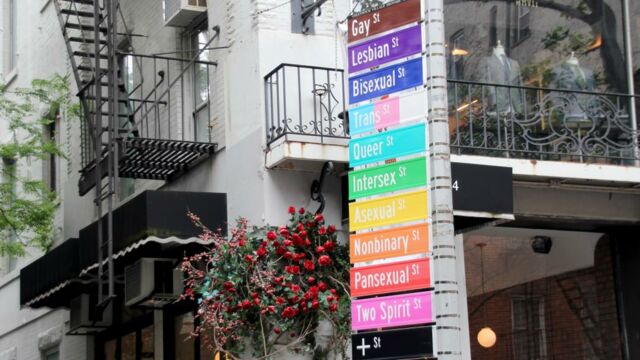What is pansexuality?

Pansexuality is a sexual identity that people believe is more inclusive than bisexuality.
In an interview with Rolling Stone, artist Janelle Monae spoke about her sexuality, explaining that she previously identified as bisexual, 'but then later I read about pansexuality and was like, ‘Oh, these are things that I identify with too.’' Janelle Monae is just one of many celebrities who have learned the full definition of pansexual and realized that the label fits them far more comfortably than 'bisexual.' Other big names to grace this list include Bella Thorne, Miley Cyrus, Cara Delevigne, Rina Sawayama and Demi Lovato.
Discover our latest podcast

What is the definition of pansexuality? How is it different from bisexuality?
Pansexuality is just one of many different sexual orientations that people can identify with. While it often gets confused with bisexuality, the two have a slight difference in definition. Bisexuality is an umbrella term, which refers to being attracted to more than one gender, while pansexuality is defined as being attracted to everyone regardless of gender identity.
Basically, pansexuality means that someone’s gender identity has no effect on whether or not pansexuals are sexually or romantically attracted to them. Much of the debate surrounding the label 'pansexual' vs. 'bisexual' refers to the inclusivity of the latter—some believe bisexuality reinforces the binary or only includes cis-gendered people, while others reassure that that the term has never discluded anyone in its definition and has always simply meant 'one or more genders.' Some people might identify with both terms, use them interchangeably, or prefer one to the other—this is why interpretations are left up to the individuals themselves and what feels right to them.
More under this adMore under this adHistory of pansexuality
The first time the word 'pansexuality' was used was in 1917 by psychologist Sigmund Freud, though the word had a different meaning at the time. Freud believed that people were born being attracted to things, including inanimate objects, and wanting to interact with everything around them. Though his definition referenced a more platonic attraction, the word evolved in the 1970s during the sexual revolution and currently has little to do with Freud’s theory.
The term began getting recognition in the 1990s when the Bisexual Manifesto was published. The manifesto recognized nonbinary and genderqueer people, which pansexuality would not exist without, and as more nonbinary people began to claim their identity, the pansexual community followed suit.
More under this adMore under this adWhere are we now?
As with any identity that gains popularity via the Internet, there is still a lot of delegitimization that happens with pansexuality. Some critics view it as a phase or a 'made-up Internet' identity, simply because the pansexual community has a lot of roots in online platforms like Tumblr. However, the community growing and gaining recognition from the Internet is not the same as it being created on the Internet, which can be very invalidating to pansexual people.
According to Google Trends data, the term 'pansexual' showed a significantly larger Internet presence in 2007, just a year after 'genderqueer' formed its own. In 2010, the pansexual flag was officially released, which helped validate many people’s pansexual identity. Not too long after, the first Pansexual and Panromantic Awareness Day was celebrated and cemented as one of the LGBTQIA+ community’s major holidays.
More under this adMore under this adPansexuality is being celebrated instead of mocked, representation in media is more prevalent than ever, and for people feeling unsure about coming out, there are plenty of public role models for them to look to for comfort.

Important figures
Janelle Monae is just one of many people that have come out as pansexual in the past few years—there’s also Kesha, Kehlani, Tess Holliday, and Jazz Jennings to name a few. Even the political world has some pansexual representation with Mary Gonzalez, who is the first openly pansexual elected official in the United States. The act of coming out and using the term 'pansexual' has had profound impacts on the community. Being able to relate to a role model in this personal way provides more strength and comfort than people can fathom. After Monae’s article was published, plenty of people in the community took to social media to share their emotions, expressing that it made them feel heard and included.

How do I show support for pansexual people in my life?
- Stop delegitimizing people’s sexualities. Being pansexual is not a phase and refusing to validate this identity can have harmful consequences to people in your life. Many pansexual people have openly admitted to not coming out due to fear of invalidation. Others admit to identifying as 'bisexual' even though they’re pansexual because they’re afraid of people’s responses.
- Understand that being pansexual is not the same as being disloyal. Just because someone can be attracted to anyone does not mean that they are attracted to everyone, and just because someone is pansexual does not mean that they are 'more prone to cheating.'
Educate others and call out pan-erasure. One of the most effective ways to help pansexual people in your life is to call out pan-erasure, also known as pansexuality erasure. If someone invalidates pansexuality or stereotypes it in a harmful way, call them out and educate them on how what they’re doing is harmful and wrong.